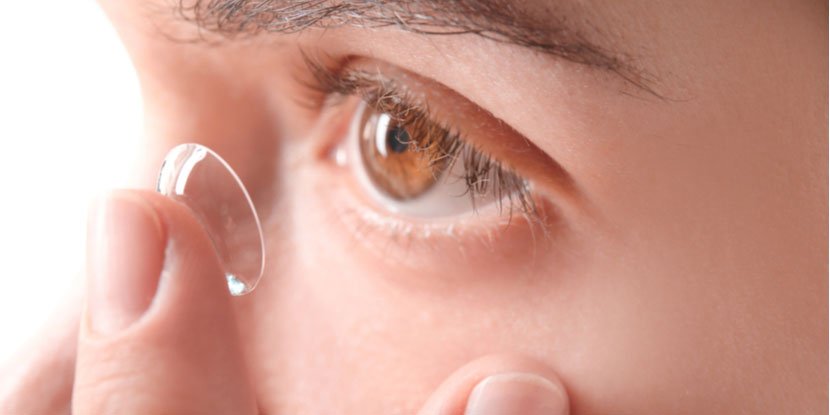
A contact lens or simply contact, is a thin lens placed directly on the surface of the eye to correct the vision as a substitute to spectacles. Contact lenses are a safe form of vision correction. A thorough eye examination and life style assessment can help determine the type of contact lenses that will work best for the patients.
Rigid gas permeable lenses: These are commonly referred to as RGP lenses. These are made of oxygen permeable polymers. These provide a good level of vision in people who have astigmatism or irregular corneal shapes such as keratoconus.
Soft contact lenses: Hydrogel and silicone hydrogel lenses are the two main types. This material is absorbent and makes the lens soft when hydrated with solution but hardens when dry.

Soft contact lenses are made of hydrogel or silicone hydrogel. The addition of silicone to the hydrogel plastic creates a lens that stays moist and allows more oxygen to be transmitted through the contact lens into the eye. This is an extremely flexible material. The main advantage over the hydrogel lenses is that the silicon hydrogel lenses allow more oxygen to permeate through the lens which increases the level of comfort. These lenses can be worn for longer periods of time which is extremely useful for those with active lifestyles, those who spend long periods of day working on the screen or those who are susceptible to dry eyes.

These lenses fulfil the functional and cosmetic need for damaged or disfigured eyes. Prosthetic lenses are given to improve the appearance of an eye disfigured due to birth defect, trauma ro other eye diseases. Theses lenses are specially designed to match the appearance of the normal unaffected eye and make the disfigured eye look less conspicuous.
This is a therapeutic contact lens. This is a special, soft, extended wear contact lens that is used to protect and cover the front surface of the eye(cornea). It is used to protect an injured cornea and helps to heal it faster.
It depends on the type of contact lenses you choose. Most people get used to soft (hydrogel or silicone hydrogel) contact lenses immediately or in just a few days. If you choose rigid gas permeable (RGP or GP) lenses or hybrid contact lenses, it might take a couple weeks or longer for your eyes to fully adapt to the lenses. In rare cases, a person might not ever feel comfortable wearing contact lenses.
Once you feel the child is responsible enough to take care of the contact lens and will follow the schedule advised on wearing and removing a contact lens one can allow children to wear contact lenses.
Contact lenses cannot go behind the eye. They can move away from their normal position and go underneath the upper lid. If you find it difficult, the eye care practitioner can help in removing the contact lens.
Disposable lenses are safer and there is less chance for the deposition of proteins and bacteria on these lenses.
Yes. Extended wear contacts are made of special materials that allow more oxygen to reach your eye, which makes them safer for wear during sleep. Contact lenses are very safe. But wearing them for too long or failure to keep them clean can result in eye problems.